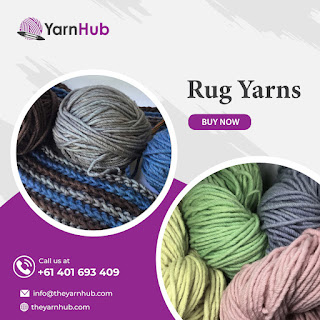Which Yarn Is Best For Making Rugs?
Before creating a rug, decide on the texture you want it to have. Which do you prefer, soft and velvety underfoot or firm? To make a robust, long-lasting rug, use a flat-woven technique. The weft yarn is layered firmly over the warp in this type of rug weaving. As a result, the weaving yarn must be sturdy and substantial.
When these yarns are trodden on, they will also be subject to friction. Because of this, you should stay away from softer, looser threads that could pill or completely wear out.
On the other hand, tufting is typically used to create softer rugs. Either a tufting gun or rows of rya knots are used for this. Weft yarns are tightly packed together in large quantities in these rugs. Because it safeguards the individual strands, it is appropriate for delicate threads. Although the surface of the rug's Yarn is subject to less friction, it is still possible for it to pill and shed. So it's advisable to stay away from highly soft yarns.
Order samples of your materials in advance at this stage of rug planning so you can feel the texture and consider how they will function on the floor. Select The Appropriate Fiber
It's a good idea to think about what fibers will be used to make the weft and warp of your rug as you choose its texture. Some fibers are perfect for making rugs. They are inherently solid and dense and can survive a very long period with proper maintenance.
Avoid using too loose or fine Yarn.
Once you've selected the ideal fiber, check to ensure your Yarn has been spun with the appropriate weight and twist. Additionally, yarns that are too fine or too loose should be avoided. Unless woven with numerous strands at once, a thin, fine yarn will be exceedingly slow to knit with and put a lot of strain on the warp. It will compress too much when you beat down a loosely spun yarn on the loom. Additionally, when it is walked on, there is a risk that dirt and dust will contaminate the Yarn's core.
Are you looking for rug yarn? Choose YarnHub because we have a wide selection of high-quality Yarn for your textile adventures. We deliver beautiful hand-dyed yarns, dyes, and weaving supplies to your door. You'll love our YarnHub signature yarns, hand-dyed in unique colorways to inspire your creativity.




Comments
Post a Comment